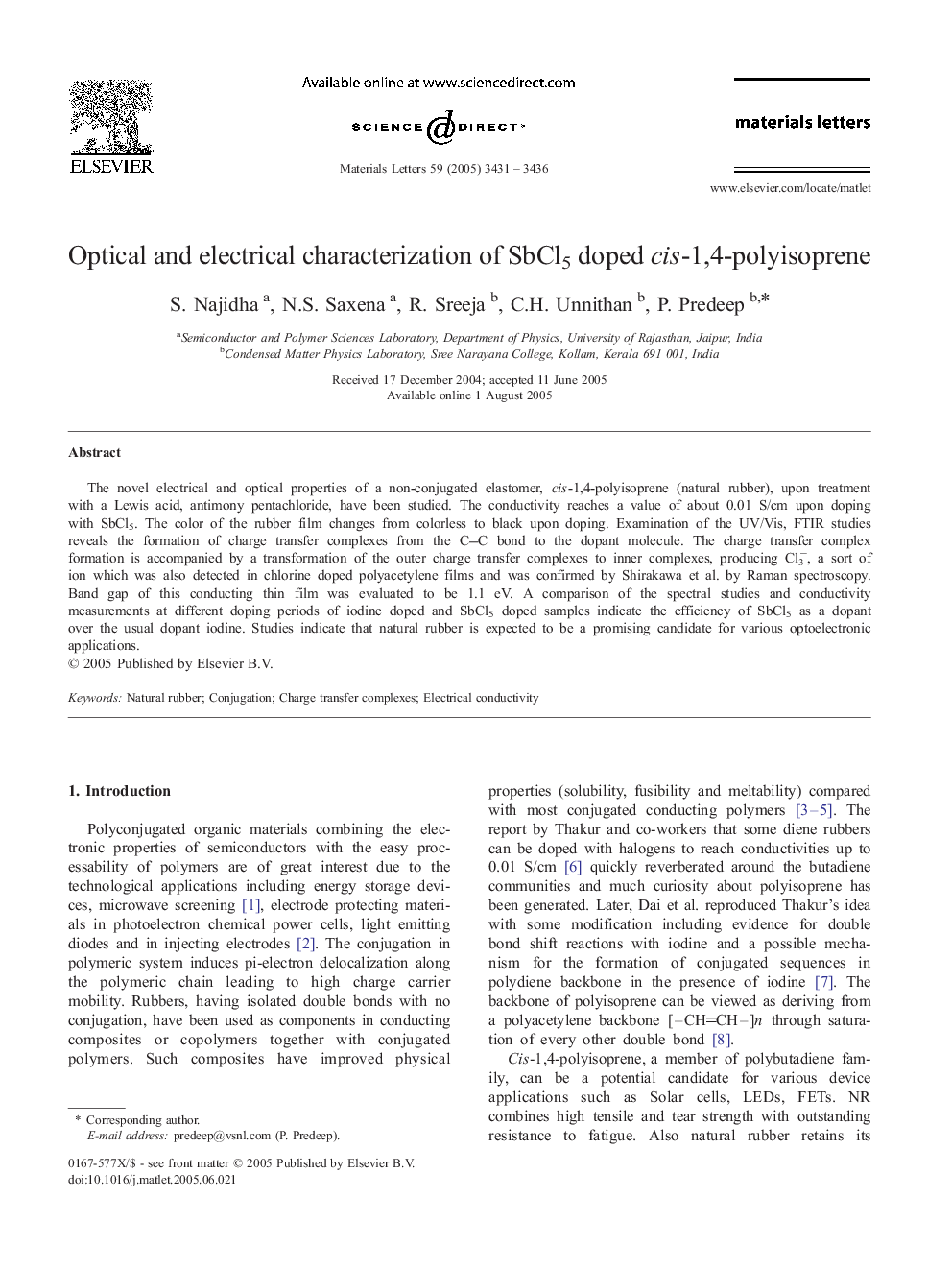| Article ID | Journal | Published Year | Pages | File Type |
|---|---|---|---|---|
| 1654367 | Materials Letters | 2005 | 6 Pages |
The novel electrical and optical properties of a non-conjugated elastomer, cis-1,4-polyisoprene (natural rubber), upon treatment with a Lewis acid, antimony pentachloride, have been studied. The conductivity reaches a value of about 0.01 S/cm upon doping with SbCl5. The color of the rubber film changes from colorless to black upon doping. Examination of the UV/Vis, FTIR studies reveals the formation of charge transfer complexes from the CC bond to the dopant molecule. The charge transfer complex formation is accompanied by a transformation of the outer charge transfer complexes to inner complexes, producing Cl3−, a sort of ion which was also detected in chlorine doped polyacetylene films and was confirmed by Shirakawa et al. by Raman spectroscopy. Band gap of this conducting thin film was evaluated to be 1.1 eV. A comparison of the spectral studies and conductivity measurements at different doping periods of iodine doped and SbCl5 doped samples indicate the efficiency of SbCl5 as a dopant over the usual dopant iodine. Studies indicate that natural rubber is expected to be a promising candidate for various optoelectronic applications.
